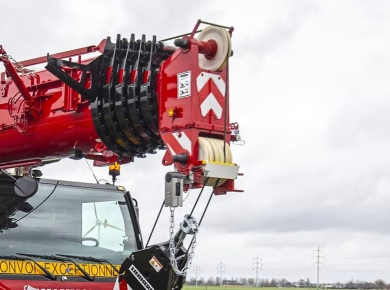When it comes to maintaining the beauty and safety of our landscapes in Florida, tree trimming plays a pivotal role, especially in the face of hurricanes. For residents living in hurricane-prone areas, understanding the art and science of pruning techniques can make all the difference. Not only does proper tree trimming enhance the aesthetic appeal of your property, but it also creates resilient canopies that can withstand the fierce winds and torrential rains characteristic of Florida storms.
Understanding the Importance of Tree Trimming in Florida
Florida’s lush, diverse ecosystems are home to a variety of tree species, each contributing to the vibrant landscape. However, with the beauty of these trees comes the responsibility of proper care, particularly in storm-prone regions. Tree trimming is not merely an aesthetic endeavor; it’s an essential practice that promotes tree health and safety.
Hurricanes pose a significant threat to both residential and commercial properties. The National Oceanic and Atmospheric Administration (NOAA) records show that Florida is one of the states most affected by hurricanes. As such, taking proactive measures to ensure that trees are well-pruned can significantly reduce the risk of damage during storms.
What is Pruning and How Does It Work?
Pruning involves the selective removal of certain parts of a tree, such as branches, buds, or roots. The goal is to promote healthy growth, enhance flowering and fruiting, and maintain the overall shape of the tree. This process can also eliminate dead or diseased branches that may pose a risk during severe weather events.
When it comes to creating hurricane-resistant canopies, specific pruning techniques become crucial. Thinning out the canopy allows wind to pass through more easily, reducing the risk of uprooting or breakage. Additionally, proper pruning helps maintain a lower center of gravity, which is key in preventing trees from toppling over in high winds.
Key Pruning Techniques for Hurricane Resistance
Crown Thinning
Crown thinning is one of the most effective pruning techniques for creating a hurricane-resistant tree canopy. This technique involves selectively removing branches throughout the tree’s crown to improve airflow and light penetration. By allowing wind to flow through the branches, trees are less likely to suffer from structural damage during storms.
Additionally, thinning out the crown can help reduce the weight of the tree. A lighter crown means less leverage for strong winds to act upon, which can ultimately prevent branches from breaking or the tree from being uprooted.
Crown Raising
Crown raising refers to the removal of lower branches to elevate the canopy of the tree. This technique not only enhances the tree’s appearance but also reduces the risk of branch breakage. Lower branches are often more susceptible to damage from wind and debris during storms. By raising the crown, the tree is better equipped to withstand harsh weather conditions.
Moreover, raising the crown can create a more aesthetically pleasing landscape, allowing for better visibility and access beneath the tree.
Crown Reduction
Crown reduction is the process of trimming back the overall height and spread of a tree’s canopy. This is particularly important for trees that may have grown too tall or wide for their surroundings. By reducing the size of the crown, the tree becomes less susceptible to wind damage while retaining its health and structural integrity.
It’s essential to approach crown reduction with care. Over-pruning can lead to stress and damage to the tree, so it’s advisable to consult with a certified arborist who can assess the tree and determine the best course of action.
Choosing the Right Time for Tree Trimming
While tree trimming can be done year-round, timing is crucial for maximizing the benefits of pruning. The best time to trim trees in Florida is typically during the late winter or early spring. This timing allows trees to heal before the summer growth spurt, ensuring they are in the best condition to handle the stress of hurricane season.
Pruning during dormancy minimizes the risk of pest infestation and disease, as many insects are less active during cooler months. Additionally, trimming before the growing season can encourage healthy new growth, enhancing the overall health of the tree.
Common Mistakes to Avoid When Trimming Trees
Even seasoned gardeners can make mistakes when it comes to tree trimming. One common error is over-pruning. While it might seem beneficial to remove as many branches as possible to lighten the load, excessive trimming can stress the tree and lead to poor health.
Another mistake is neglecting to use the proper tools. Dull or inappropriate tools can cause injury to the tree and lead to additional problems. Always use sharp, clean tools designed for the specific type of pruning you’re undertaking.
Lastly, failing to consider the tree’s natural growth pattern can lead to unnatural shapes that may not withstand storms well. Understanding the species and growth habit of your trees will guide you in making the best pruning decisions.
Hiring a Professional Arborist
While DIY tree trimming may seem like a cost-effective option, hiring a professional arborist often proves to be the wiser choice, especially when dealing with larger trees or complex pruning techniques. Certified arborists possess the knowledge and experience to assess the health of your trees and implement the most effective pruning strategies for hurricane resistance.
Moreover, professionals are equipped with the right tools and safety gear to perform the job efficiently and safely. They can also advise on ongoing tree care practices that will further enhance the resilience of your landscape against hurricanes.
Maintaining Your Trees After Trimming
After trimming your trees, it’s crucial to maintain their health to ensure they remain robust. Regular watering, especially during dry spells, helps trees recover from the stress of pruning. Fertilization can also support new growth, but it’s essential to use the right type of fertilizer suitable for your specific tree species.
Monitoring your trees for signs of disease or pest infestations post-trimming is also vital. Early intervention can prevent significant issues down the road.
Conclusion: The Long-Term Benefits of Tree Trimming
In Florida, where hurricanes can wreak havoc on landscapes, the importance of tree trimming cannot be overstated. By employing appropriate pruning techniques, homeowners can create resilient canopies capable of withstanding the fierce winds and rain that accompany storms.
Investing time and effort into tree care not only enhances the beauty of your property but also ensures the safety of your home and loved ones. As we embrace the rhythms of nature, let us remember that nurturing our trees is a commitment to a safer, greener future. Whether you choose to tackle tree trimming yourself or consult a professional, the long-term benefits will undoubtedly outweigh the challenges.
Through thoughtful pruning, we can cultivate a landscape that stands strong against the elements, offering shelter, beauty, and resilience for years to come.


